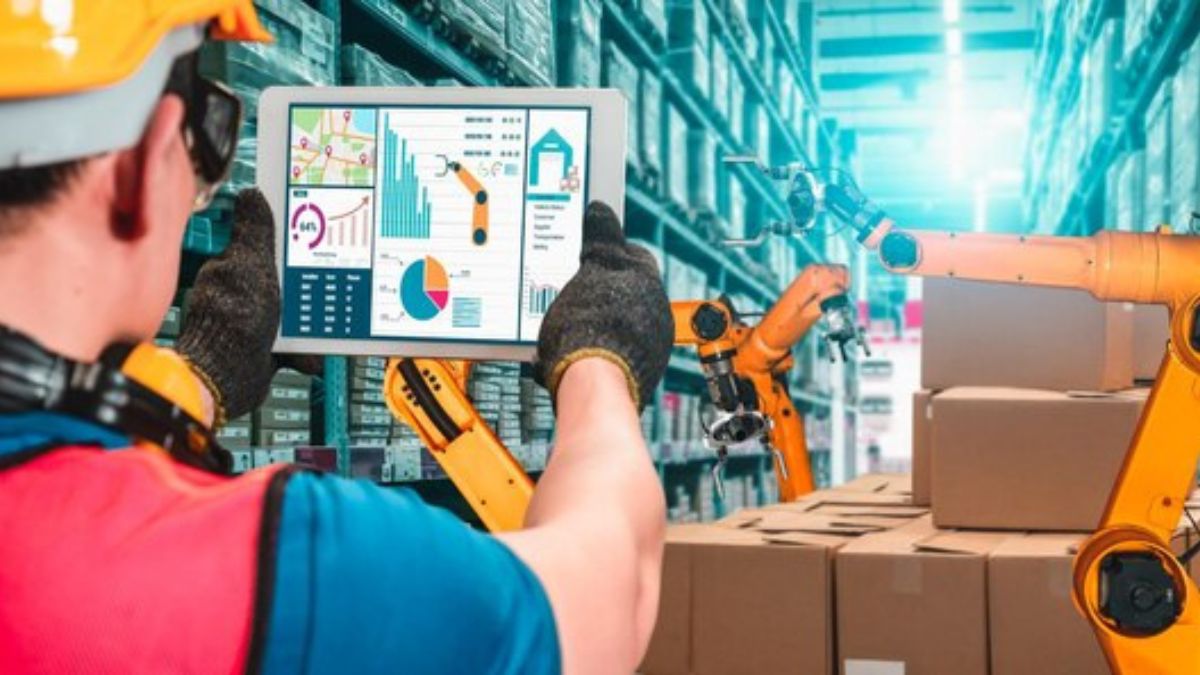In modern manufacturing, ensuring every component and part is correctly packaged before shipment is critical. Industries such as machinery, appliances, electronics, and furniture production rely on complex assemblies, making even a single missing part a costly mistake. When an installer arrives at a customer’s location only to find missing parts, the entire process may need to be rescheduled. This can lead to increased costs, customer dissatisfaction, and potentially damage the manufacturer’s reputation.
To address these challenges, companies are increasingly adopting machine vision technology, a game-changer in automated quality control. Machine vision systems can ensure accurate packaging, detect missing parts in real-time, and monitor SOPs to improve packaging efficiency. Here’s how machine vision technology is transforming packaging lines and helping manufacturers achieve optimal accuracy.
The Importance of SOP Monitoring in Packaging Lines
In packaging, SOPs outline the critical steps required to ensure that every component is present, properly labeled, and securely packaged before leaving the production line. Adherence to SOPs is essential to prevent:
- Customer Dissatisfaction: Missing parts lead to frustration and delays for customers attempting assembly.
- Installation Delays: Missing components may force installers to reschedule, leading to logistical complications.
- Increased Costs for Returns and Rework: Incomplete or incorrect shipments result in returns, which demand rework, reshipping, and extra resources.
- Reputational Damage: Frequent packaging errors can hurt a manufacturer’s brand, impacting customer loyalty and future sales.
Automating SOP monitoring through machine vision can significantly reduce these risks. Machine vision systems use cameras, lighting, and powerful software to inspect components in real time. They ensure each part is accounted for, properly placed, and ready for shipment. The benefits are vast, ranging from increased accuracy to enhanced customer satisfaction.
How Machine Vision Systems Work in Packaging Lines
Machine vision systems use advanced imaging and algorithms to inspect products and packaging quickly and accurately. Here’s a breakdown of the typical workflow:
- Camera Setup: Cameras are strategically positioned on the packaging line to capture images of products and their components. Multiple cameras may be used to get a complete view, allowing the system to see all relevant parts.
- Image Capture and Processing: As products move down the line, cameras capture high-resolution images. The system’s software analyzes these images using algorithms that detect each component, identifying whether anything is missing or improperly placed.
- SOP Comparison: The system compares captured images to predefined SOPs that detail the expected components and their arrangement in the packaging. Any discrepancy, such as missing parts or improper positioning, is quickly flagged.
- Real-Time Alerts: If the system detects an error, it immediately generates an alert, allowing operators to correct the issue before the package moves further down the line.
- Evidence and Documentation: Machine vision systems can store images of each packaged product, creating a record of compliance with SOPs. This documentation is invaluable for customer disputes, audits, and quality assurance.
Key Benefits of Machine Vision Systems in Packaging Lines
Implementing machine vision for SOP monitoring offers significant advantages across various industries. These benefits include:
- Real-Time Detection of Missing Parts: With machine vision, companies can detect missing or misaligned components immediately, allowing for instant corrective action.
- Increased Accuracy and Consistency: Machine vision systems are highly accurate, catching even the smallest parts like screws or connectors. This ensures that no components are overlooked, maintaining consistency throughout the production process.
- Improved Efficiency and Throughput: By automating inspection, machine vision reduces the need for manual checks, allowing packaging lines to run faster without sacrificing quality. This leads to higher throughput and productivity.
- Reduced Returns and Rework: Errors caught before products are shipped prevent returns and the need for costly rework, saving time and resources while improving customer satisfaction.
- Comprehensive Documentation: Stored images and records of each inspection create a compliance trail, proving that all components were included. This documentation is beneficial for audits, warranty claims, and customer disputes.
Industry Applications of Machine Vision for SOP Monitoring
Industries that rely on complex assemblies or require precise component packaging benefit significantly from machine vision. Here are a few sectors where this technology has transformed packaging accuracy:
1. Machinery Manufacturing
Machinery often comprises numerous small parts like screws, bolts, and gaskets. Missing even a minor component can delay assembly, increase costs, and cause customer frustration.
How Machine Vision Helps:
- Ensures all necessary components are included in each packaging unit.
- Detects improper placement of parts, preventing incomplete or incorrect packages from being shipped.
2. Appliance Manufacturing
In appliances like refrigerators or washing machines, key components such as mounting brackets or hoses are critical for installation. Missing parts force installers to reschedule, leading to dissatisfaction and extra costs.
How Machine Vision Helps:
- Verifies that all parts, including mounting hardware and manuals, are included.
- Monitors correct placement and labeling to avoid installation errors.
3. Electronics Manufacturing
Electronics packaging requires accurate inclusion of cables, connectors, and screws for the device to function correctly. Missing components may lead to malfunctions or delays in setup.
How Machine Vision Helps:
- Detects missing cables, connectors, or small parts in the packaging process.
- Ensures correct labeling and placement, reducing chances of setup errors.
4. Furniture Manufacturing
Flat-pack furniture requires every part for correct assembly. Missing screws, brackets, or wooden pieces delay assembly and frustrate customers.
How Machine Vision Helps:
- Confirms that all hardware components are included in each kit.
- Prevents incomplete shipments by detecting missing parts or improper placements.
5. Automotive and Aerospace Manufacturing
In automotive and aerospace, every part counts. A missing component can cause safety issues, production delays, and increased costs.
How Machine Vision Helps:
- Inspects parts kits for completeness, ensuring that every component is present.
- Tracks the inclusion of safety-critical components, maintaining assembly schedules.
Challenges and Solutions in Implementing Machine Vision for SOP Monitoring
Despite its advantages, implementing machine vision has challenges, including:
- Product and Packaging Variability: Products may vary in size, shape, and color, which can complicate inspection.
- Solution: Modern vision systems use machine learning to adapt to these variations, ensuring accurate inspections across different product lines.
- Environmental Conditions: Lighting, temperature, and vibrations on the factory floor may affect image quality.
- Solution: Controlled lighting and vibration damping measures can ensure consistent performance.
- Initial Investment Costs: Machine vision technology requires an upfront investment, which may be significant for smaller manufacturers.
- Solution: Long-term savings from improved accuracy and reduced returns often justify the cost. Scalable systems also allow manufacturers to start small
Emerging Trends in Machine Vision for Packaging Lines
It is advancing rapidly, offering manufacturers new capabilities for monitoring and inspecting SOPs in packaging lines:
- AI-Enhanced Vision Systems: AI enables machine vision to identify subtle defects, product changes, and component misplacements. With ongoing learning, AI systems improve accuracy and efficiency over time.
- Edge Computing for Real-Time Processing: By processing data at the source, edge computing allows immediate detection and correction of missing parts, reducing latency and providing faster response times.
- Integration with Robotics: Vision-guided robots can work alongside machine vision systems to automate repetitive tasks like component placement, reducing the need for human intervention and improving accuracy.
Machine vision systems for SOP monitoring are revolutionizing the packaging process, enabling real-time detection of missing parts and increasing overall accuracy. By automating these inspections, manufacturers can prevent costly mistakes, improve customer satisfaction, and maintain a high standard of quality. As technology advances, machine vision will continue to become more adaptive, efficient, and cost-effective, offering manufacturers in industries from machinery to electronics a powerful tool for precise, reliable packaging.
For companies seeking to maintain quality while boosting productivity, machine vision is more than a worthwhile investment—it’s a necessity in today’s competitive market.
It technology is transforming packaging lines, enabling manufacturers to improve accuracy, reduce costs, and enhance customer satisfaction. With capabilities like real-time SOP monitoring, defect detection, and robotic integration, machine vision represents the future of packaging in complex assembly-driven industries.











